Importance to Republicans seen on Gubernatorial Ballot where Stitt has Commanding Lead
Sooner Survey: Volume 34 No. 1 | March 1, 2022
By Pat McFerron, President
Cole Hargrave Snodgrass & Associate
![]() @McFerron
@McFerron
Prior to the pandemic, and prior to the parent revolution over issues such as CRT and who is fundamentally in control of a child’s education, school choice had majority support in Oklahoma and strong support among Republicans.
Now support for using tax dollars to send a child to a school setting that best serves them – including private or parochial schools ‒ is even stronger reaching 65% among all voters and 78% among Republicans. The impact of this issue on elections was realized at the polls in last year’s Virginia elections and Oklahoma seems poised to take the same approach in 2022.
When we first asked a question about school choice in 2018, 56% of Oklahomans supported the idea of letting tax dollars go with parents to the school of their choice while 39% opposed – a 17-point advantage. Today that advantage more than twice as much at 38% (65% favor school choice vs. 27% oppose school choice). While some of this may be attributed to the situations arising during the pandemic, that cannot explain all of the movement as the current trajectory was recorded in January of 2020 – prior to coronavirus being a well-known term – as support had increased to 61% and opposition fallen to 33%.
Given the fact that most Republican leaders are supportive of school choice, it comes as no surprise that Republican support is so strong. In fact, school choice is slightly more popular among Republicans (78% – 18%) than is Donald Trump (77% – 19% in our latest poll). On the whole, Oklahoma Republican primary voters are more supportive of school choice than say they are pro-life. (In an October 2021 survey, 68% of Republicans preferred a pro-life candidate while 21% preferred pro-choice.)
This is an issue that splits the Democrat base with 47% of Democrats supportive of school choice while 39% oppose. Those Democrats in metro areas – particularly minority areas – are the most supportive while older, rural, Democrats (the last of the “Blue Dogs”) are the most opposed.
We also see the partisan nature of school choice when we look at the gubernatorial ballot. Our survey shows Kevin Stitt with (49%) a 22-point advantage over Democrat Joy Hofmeister (27%). The announced Libertarian and Independent combine for support from 8% of voters. Among those voting for Kevin Stitt, 82% support school choice and only 12% oppose. Among those with a favorable impression of Donald Trump, 80% support school choice. Hofmeister voters break against school choice (36% favor vs. 53% oppose). The reality is, any Republican opposed to school choice is aligning with Hofmeister and at odds with their base.
While school administrators and others want to paint school choice as an enemy of rural Oklahoma, voters in those areas do not buy it. In fact, those living in the 71 counties outside the OKC and Tulsa metros are among the most supportive of school choice (70% favor vs. 25% oppose). When we ask voters what type of school district they live in, the 40% who say they are in rural schools support school choice by an astounding 48-points (72% favor vs. 24% oppose), eclipsing that of the 35% in suburban districts (62% favor vs. 29% oppose) and the 21% in urban schools (59% favor vs. 31% oppose).
While they may like their own school, rural voters are conservatives and adopt both the free-market aspect of school choice in that they see competition as good for schools (62% Competition helps schools) and a belief in the family unit with 60% saying parents, not professional educators, should have the most say in a child’s education.
In addition to the misconception of rural voters, another myth being perpetrated is that public school employees oppose school choice. While many have heard anecdotal comments from teachers being supportive, this study shows that among the 6% of respondents currently working in schools, just as many support school choice (45%) as oppose it (45%). A larger cell-size of 14% who have formerly worked in a public school setting shows even greater support (56% favor vs. 41% oppose). We also see that those who have a family member currently working in a school (57% favor vs. 35% oppose) or have a family member who used to work in an Oklahoma public school (62% favor vs. 33% oppose) are also supportive of school choice. It is clear there is a disconnect between the message coming from union leadership and school administrators and the actual school employees.
Among Republicans, the school choice issue is as fundamental as the question of who should have the most say in a child’s education. Among Republicans, 73% say it is the parent while only 15% say it should be education professionals. Among Democrats, we see a much different perspective with a plurality deferring to education professionals (43%) while only 38% say a parent should have the most say in how their child is educated. ◊


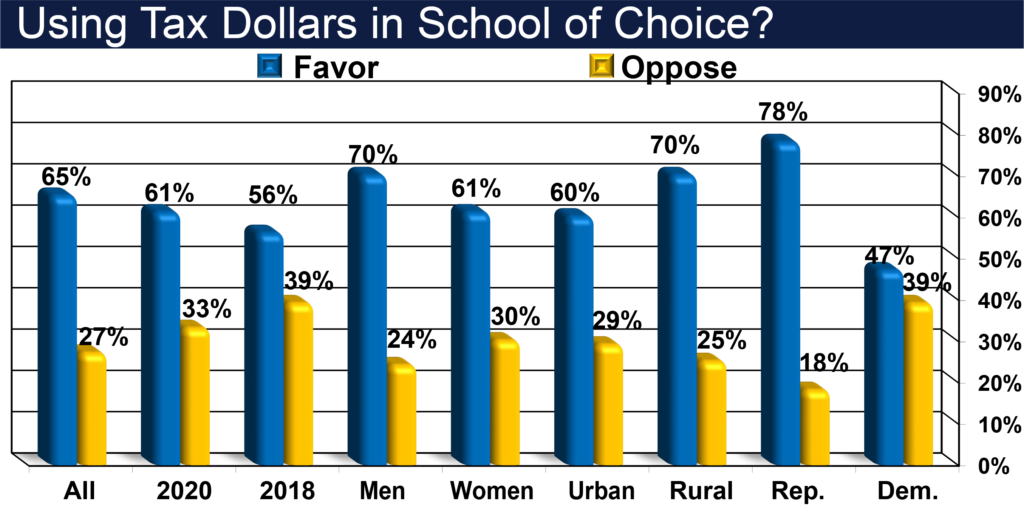

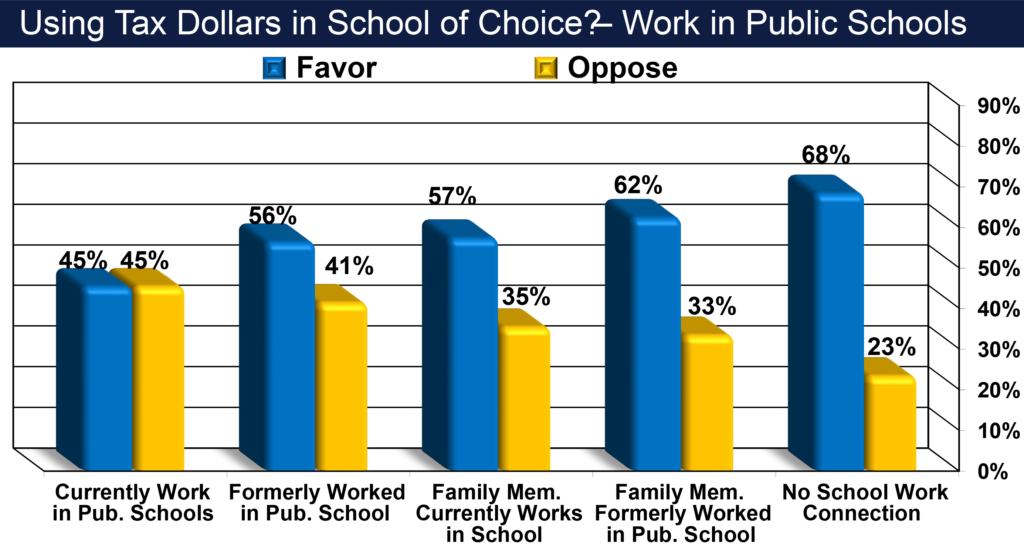
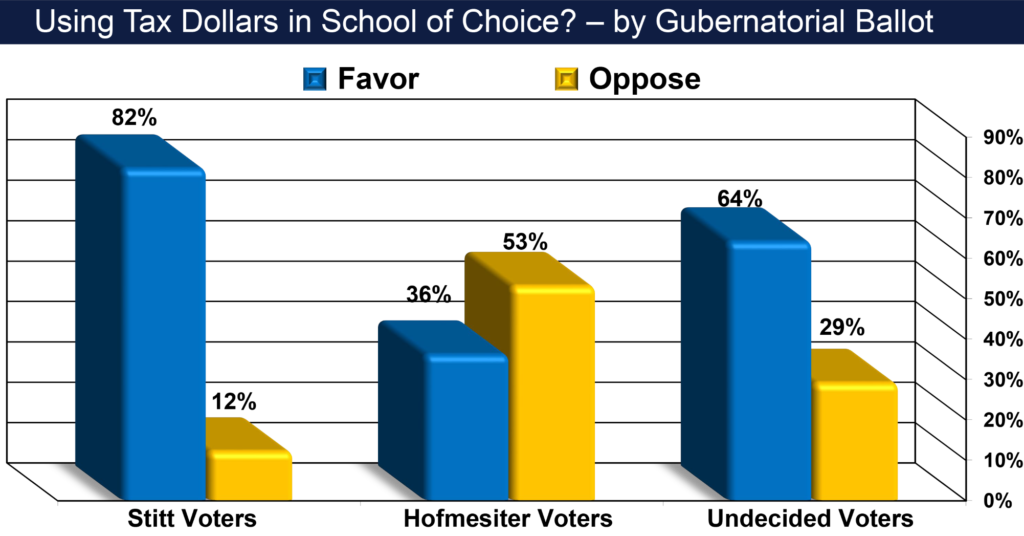
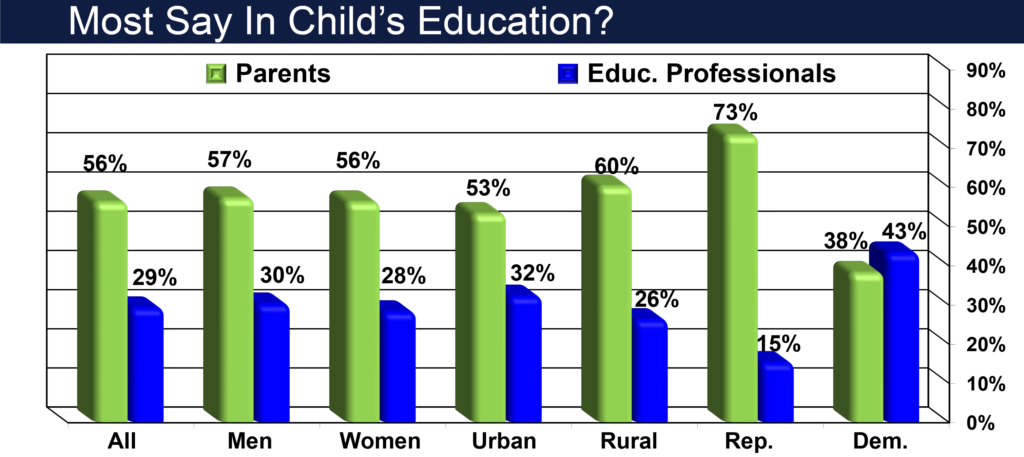


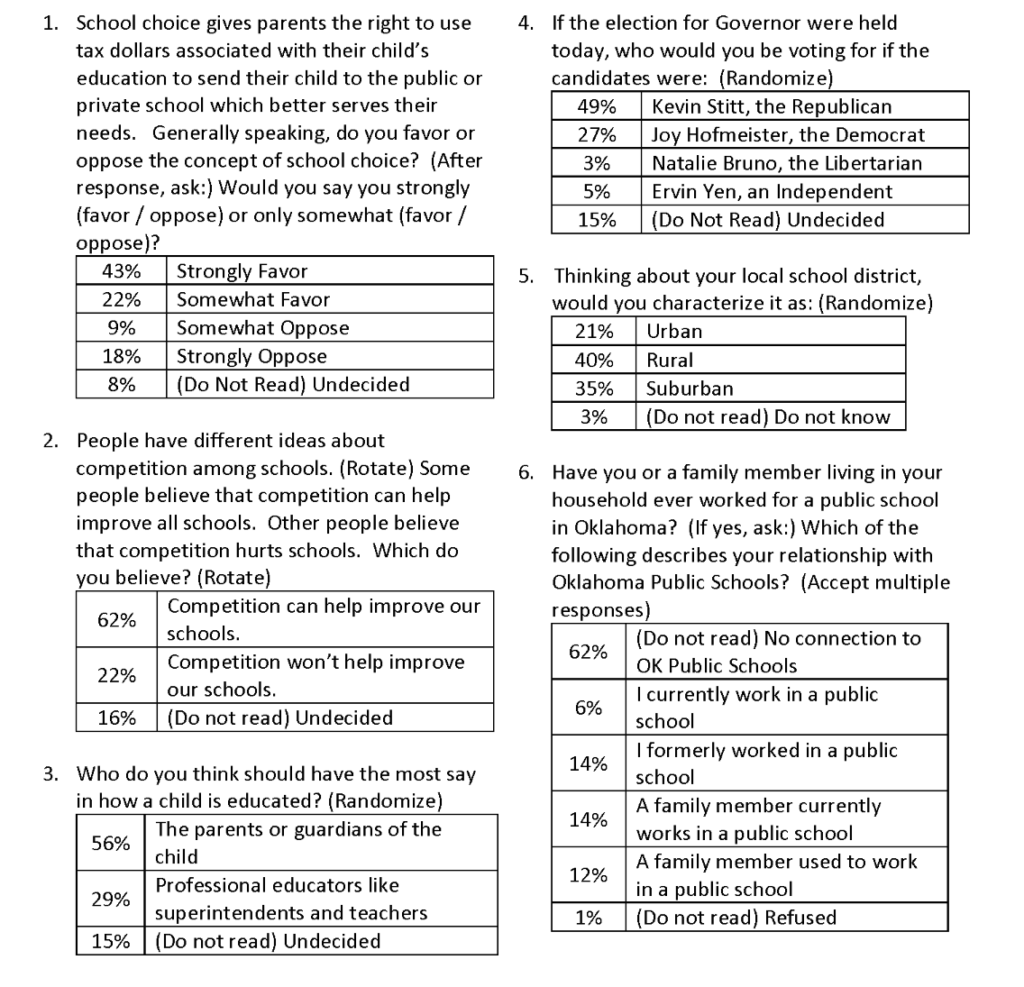

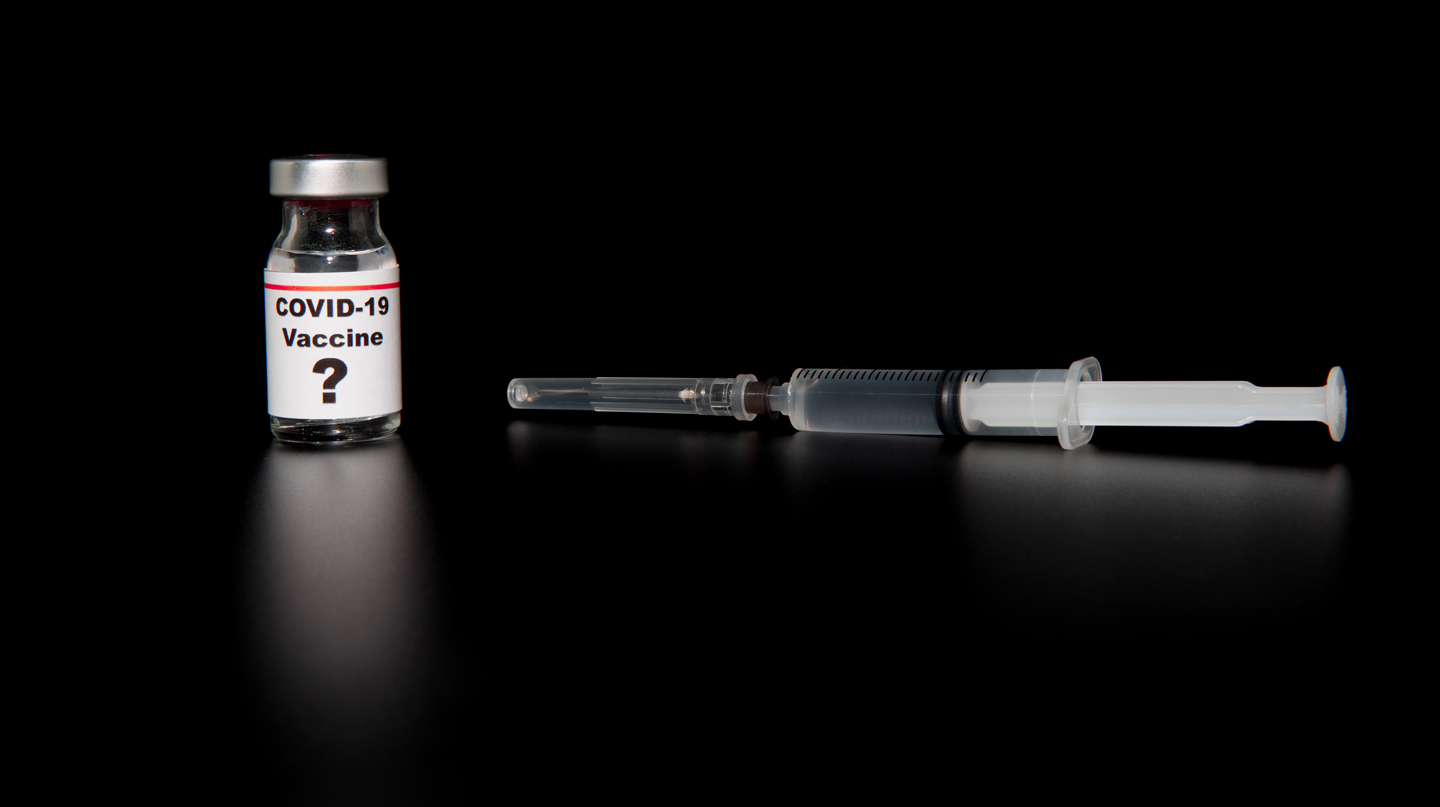
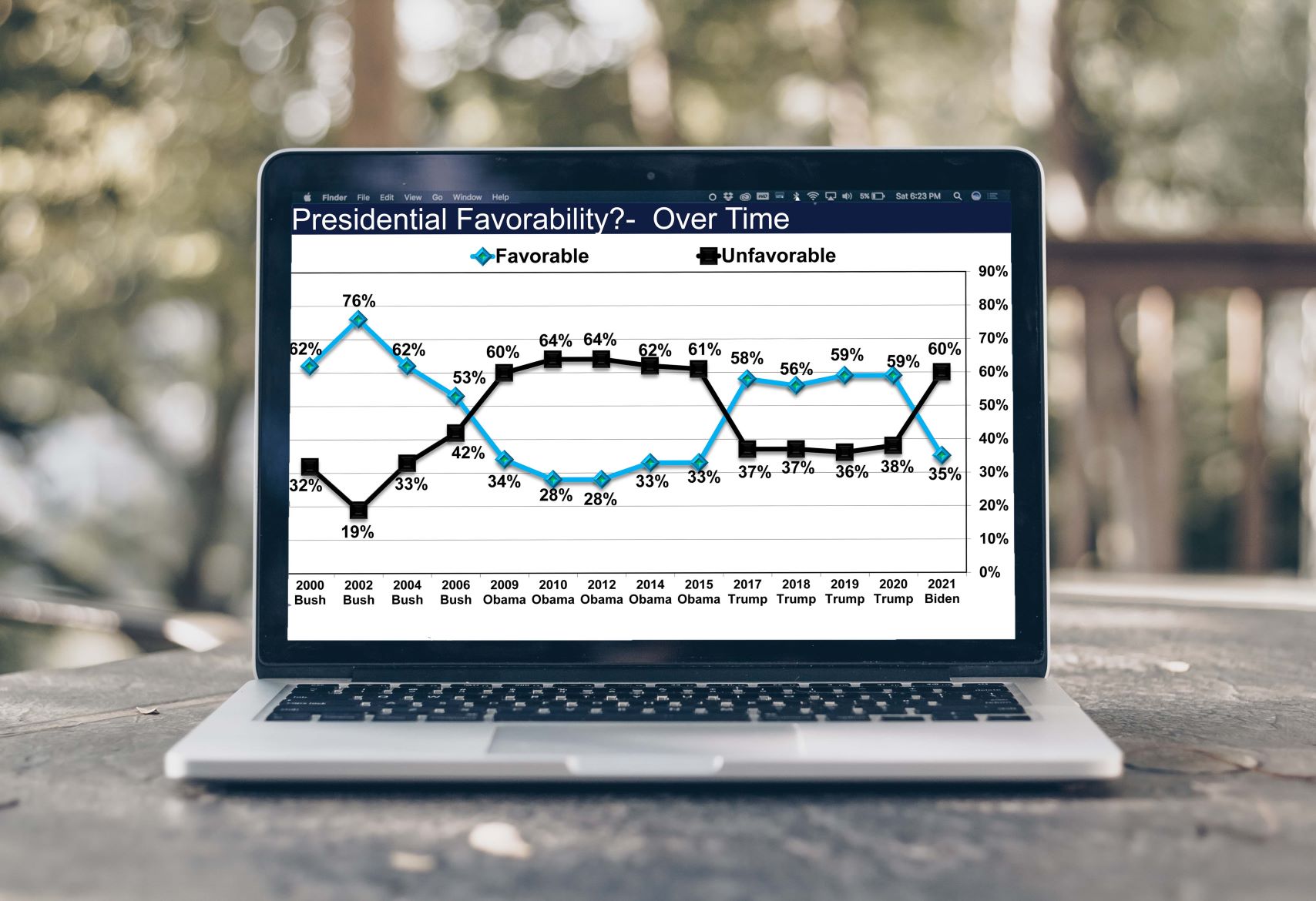

Recent Comments